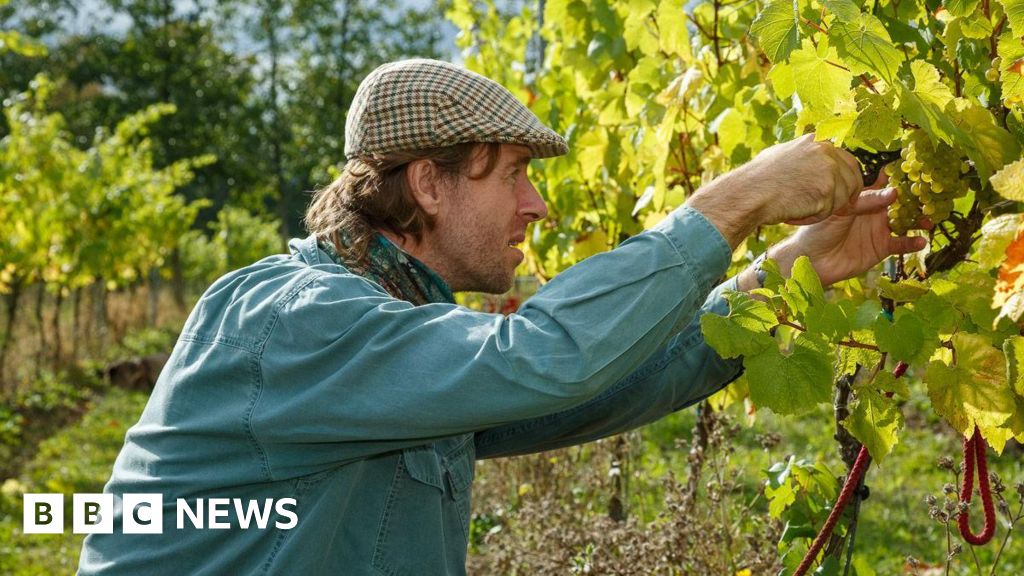Image source, Visit Essex
Article informationauthor, Stuart WoodwardRole, BBC News, Essex
June 7, 2024
“erratic” weather conditions and a wet winter have made this year a challenge for grape growing, according to an Essex vineyard.
The county is the fifth largest producer of grapes in the UK – and the largest in the East.
Mild conditions led to buds appearing earlier than usual, and sudden frosts in April damaged some crops.
“We hope to have a good growing season going forward,” said Paul Edwards, owner of Saffron Grange Vineyard.
“Big losses”
Wine production is one of the fastest growing industries in the UK.
A combination of a wet summer and hot September last year produced a bumper crop, with more than 20 million bottles of wine produced.
The eastern region harvested more than 10 tons of grapes per hectare last year, double the previous highest production in 2022.
But the weather in the first half of 2024 has already presented the region's vineyards with problems to overcome.
Image source, Visit Essex
“Wet conditions delayed us from starting winter pruning,” Mr Edwards said.
He added that the buds began to open two weeks earlier than last year, making the vines more vulnerable to frost damage.
A severe frost at the end of April led to “significant losses” to some Chardonnay vines at Saffron Grange, despite the best efforts of staff.
Mr Edwards said the rest of the spring “appears to be frost-free”, but his vineyard will continue to adapt its methods to deal with changing conditions.
“No one ever said that growing grapes in a cold climate would be easy,” he added.
Image source, Visit Essex
The vineyards of northwest Essex benefit from the same chalk line that runs through the Champagne region of France.
“In Essex, we have the perfect climate and geology for viticulture,” said Lisa Bone, Strategic Tourism Director at Visit Essex.
“Vineyards are popping up all over the county, and they are changing our rural landscape and making it more attractive to visitors.”
Many vineyards rely on tourism to supplement their income, with wine tasting events and weddings accounting for 32% of total vineyard income in the East.
“It is great to see how our winemakers and distilleries have become entrepreneurs to enhance our tourism offering,” Ms Bone added.


